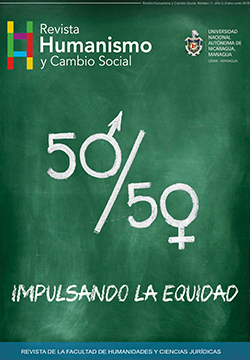Evaluation of the current state of Food and Nutritional Security of the communities in severe poverty of the municipalities: Masatepe, Nandasmo, Niquinohomo, Catarina and San Juan de Oriente in the department of Masaya during the year 2016.
DOI:
https://doi.org/10.5377/hcs.v0i11.8729Keywords:
Food insecurity, Extreme Poverty, General Poverty, ACP, Simple Correspondence, Analysis, ELCSAAbstract
The objective of this study is to determine the percentage of the population living under general and extreme poverty and to estimate the levels of food and nutritional security of families living in vulnerable areas, particularly, the municipalities of: Masatepe, Nandasmo, Niquinohomo, Catarina and San Juan de Oriente in Masaya during the year 2016. According to the indicator of unsatisfied basic needs (UBN) measured by the CENSO of the year 2005. The method was descriptive, correlational and analytical. The survey technique and the form "Latin American and Caribbean Scale of Food Security" (LACSFS) was applied to a sample of n=175 of a population of N=1,245 heads of households. The sample was taken with a 95% confidence level and a maximum permissible error of B=0.3223. Results, the LACSFS showed a high internal consistency (Cronbach 99.3 %). In the studied households, 62% of the heads of households were female; the remaining 38 % were male. Regarding the level of schooling, 33.7 % had a secondary schooling and 35.4 % had an academic level of primary schooling. Regarding the incidence of poverty, 90.3% of the families are extreme poor, and 9.7% of them were in general poverty. Women are more likely (57.7 %) to be in more extreme poverty compared to men (57 %). In conclusion, the families surveyed were found in severe poverty to which is added the high percentages of prevalence in food insecurity. In this population, women are more likely to be poor and they are more likely to be food-insecure.
Downloads
853
References
•Asamblea Nacional. (2010). Ley No. 693 Ley de Soberanía y Seguridad Alimentaria y Nutricional. Managua. Obtenido de http://www.asamblea.gob.ni/
• Elia Beatriz Pineda, E. L. (1996). Manual Para el Desarrollo de Personal de Salud. Whashington.
• FAO. (2007). Medición de la Seguridad Alimentaria en Encuesta de Hogares: Un Método Cualitativo Factible de Aplicar en América Latina y el Caribe. Quito.
• FAO. (2011). Foro Global sobre la Seguridad Alimentaria y Nutricional. Estados Unidos de América. Obtenido de http://www.fao.org/fsnforum/es/activities/discussions/fs-indicators
• FAO. (2011). Seguridad Alimentaria y Nutricional Conceptos Basicos. Honduras. Obtenido de http://www.fao.org/search/
• FAO. (22 de Febrero de 2012). Escala Latinoamericana y Caribeña de Seguridad Alimentaria (ELCSA). Obtenido de Organizacón de las Naciones Unidas para la Alimentación y La Agricultura: http://www.fao.org/search/
• FUNIDES. (2002). Cresimiento Inclusivo. Managua.
• Guevara, B. d. (2013). Medición de la Seguridad Alimentaria en los Barrios Urbanos: Laureles Sur y Villa Guadalupe y la Comunidad Rural Las Lajas, aplicando la Escala Latinoamericana y Caribeña de la Seguridad Alimentaria, Octubre 2012 a Febrero 2013. Managua.
• María N. Muñoz-Astudillo, J. W. (13 de 8 de 2010). Validación de la Escala Latinoamericana y Caribeña de Seguridad Alimentaria en gestantes adolescentes. Revista Salud Pública, 181.
• Nancy Carolina Castellanos Gómez, S. M. (2014). “Validación de un instrumento para evaluar la Inseguridad Alimentaria en comunidades de los departamentos de: Guatemala, Chimaltenango y Jalapa”. Guatemala.
• Pedroza, M. (2015). El Método Cientifico. Managua.
• Roberto Hernández Sampieri, C. F. (2006). Metodología de la Investigación. (A. M. Avila, Ed.) México,D,F.: McGraw-Hill.




